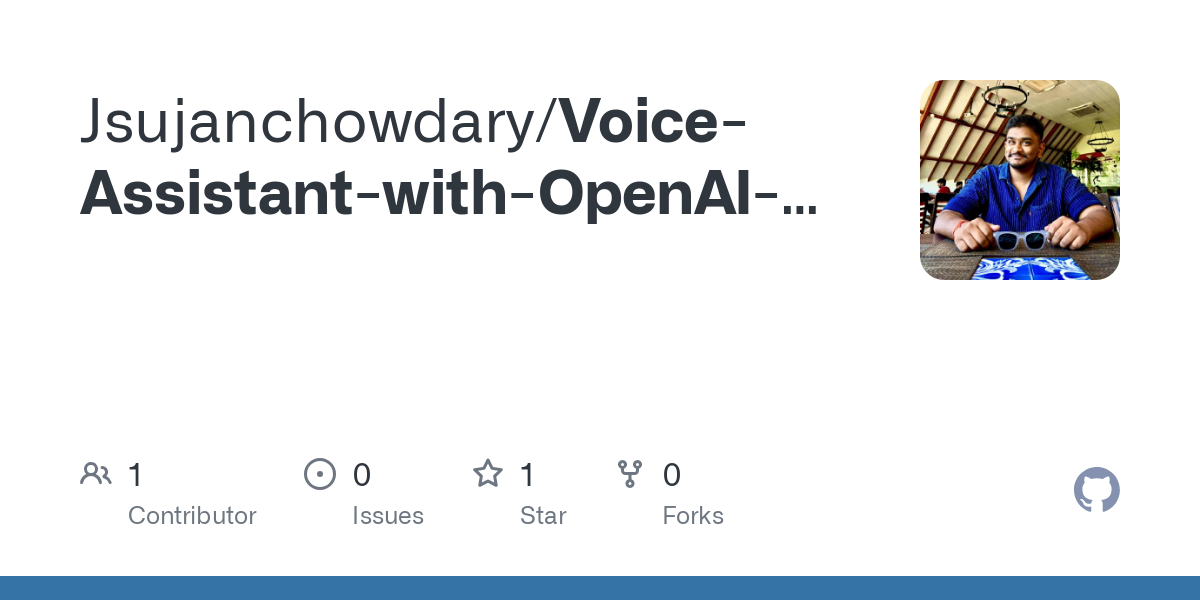OpenAI Unveils Streamlined Voice Assistant Development Tools

Table of Contents
Simplified Model Training for Voice Assistants
OpenAI's new tools significantly lower the barrier to entry for voice assistant development, addressing two key challenges: the need for vast amounts of training data and the complexity of the training process itself.
Reduced Training Data Requirements
OpenAI's new tools leverage advanced machine learning techniques like transfer learning and innovative model architectures to dramatically reduce the amount of training data needed. This is a game-changer for developers.
- Improved data efficiency through transfer learning: Pre-trained models are fine-tuned with smaller datasets, significantly reducing data collection and annotation efforts.
- Reduced reliance on extensive, expensive data annotation: The need for manually labeling large datasets is minimized, saving time and resources.
- Faster iteration times for voice assistant development: Developers can experiment and iterate more quickly, leading to faster product development cycles. This accelerates time to market for new voice-enabled applications.
Intuitive Training Interfaces
The complexity of training machine learning models is significantly reduced through intuitive interfaces. Developers, even those without extensive machine learning expertise, can now effectively train and manage their voice assistant models.
- Drag-and-drop functionality for data import and management: Importing and organizing training data is simplified, making the process more accessible.
- Real-time progress visualization for model training: Developers can monitor the training process and identify potential issues early on.
- Simplified hyperparameter tuning tools for optimal model performance: Fine-tuning model parameters is streamlined, ensuring optimal performance without requiring deep machine learning knowledge.
Enhanced Natural Language Understanding (NLU) Capabilities
OpenAI's advancements extend beyond simplified training, encompassing substantial improvements in natural language understanding, crucial for creating truly engaging and helpful voice assistants.
Improved Speech-to-Text and Text-to-Speech
OpenAI's improved speech recognition and synthesis engines are at the heart of these advancements, resulting in a more natural and seamless user experience.
- Reduced latency in speech processing: Users experience faster response times, leading to more fluid conversations.
- Improved accuracy in noisy environments: The voice assistant performs reliably even in less-than-ideal acoustic conditions.
- Support for multiple languages and accents: This expands the reach and accessibility of voice assistant applications globally.
Advanced Intent Recognition and Dialogue Management
The new tools feature state-of-the-art natural language understanding capabilities, enabling more sophisticated conversational AI.
- Enhanced context awareness for improved dialogue flow: The voice assistant remembers previous turns in the conversation, leading to more natural and coherent interactions.
- Improved handling of complex user queries and requests: The system can understand nuanced requests and provide accurate responses even for complex inquiries.
- Advanced capabilities for managing multi-turn dialogues: The voice assistant can engage in extended conversations, handling context switches and maintaining the flow of the conversation effectively.
Integration with Existing Platforms and Services
OpenAI's commitment to seamless integration ensures that these new tools can easily be incorporated into existing workflows and applications.
Seamless API Integration
The platform's robust API simplifies deployment across various applications and devices.
- Support for various cloud platforms (e.g., AWS, Google Cloud, Azure): Developers can integrate the tools into their preferred cloud environments.
- Easy integration with popular messaging apps and smart home devices: Seamless deployment across a variety of platforms is facilitated.
- Flexible APIs for custom integrations: Developers have the flexibility to tailor integrations to their specific needs.
Scalability and Reliability
The platform is built for scalability and reliability, ensuring robust performance even under heavy load.
- Robust infrastructure for handling high volumes of requests: The platform can handle large numbers of concurrent users without performance degradation.
- Built-in monitoring and logging tools for improved performance tracking: Developers can monitor the system's performance and identify areas for improvement.
- Support for various deployment environments: Flexibility in deployment options ensures adaptability to different use cases.
Conclusion
OpenAI's new streamlined voice assistant development tools represent a significant advancement in conversational AI. By simplifying the development process and enhancing NLU capabilities, OpenAI empowers developers to create innovative and engaging voice assistants. The reduced training data requirements, intuitive interfaces, and seamless integration make this technology more accessible than ever before. Ready to build your next-generation voice assistant? Explore OpenAI's streamlined voice assistant development tools today and unlock the potential of conversational AI!

Featured Posts
-
 New Werner Herzog Film Bucking Fastard Stars Real Life Sisters
Apr 27, 2025
New Werner Herzog Film Bucking Fastard Stars Real Life Sisters
Apr 27, 2025 -
 Canada Vs Us Why Tourists Are Choosing The Great White North
Apr 27, 2025
Canada Vs Us Why Tourists Are Choosing The Great White North
Apr 27, 2025 -
 Napoleon Grills Ceos Focus On Canadian Sourcing
Apr 27, 2025
Napoleon Grills Ceos Focus On Canadian Sourcing
Apr 27, 2025 -
 Extreme Price Hike Proposed By Broadcom For V Mware At And T Details 1 050 Increase
Apr 27, 2025
Extreme Price Hike Proposed By Broadcom For V Mware At And T Details 1 050 Increase
Apr 27, 2025 -
 Professional Stylists Behind Ariana Grandes Drastic Hair And Tattoo Makeover
Apr 27, 2025
Professional Stylists Behind Ariana Grandes Drastic Hair And Tattoo Makeover
Apr 27, 2025
